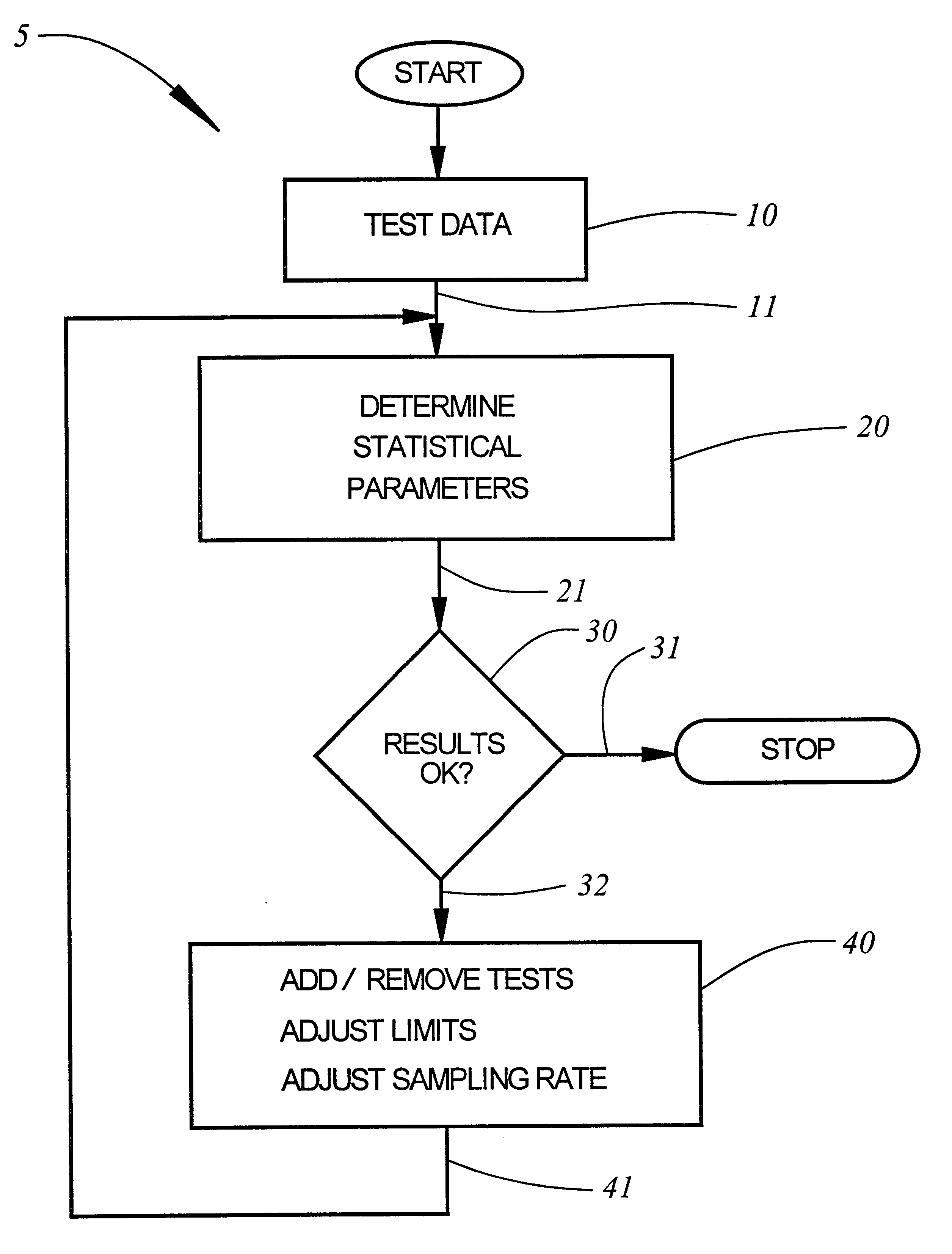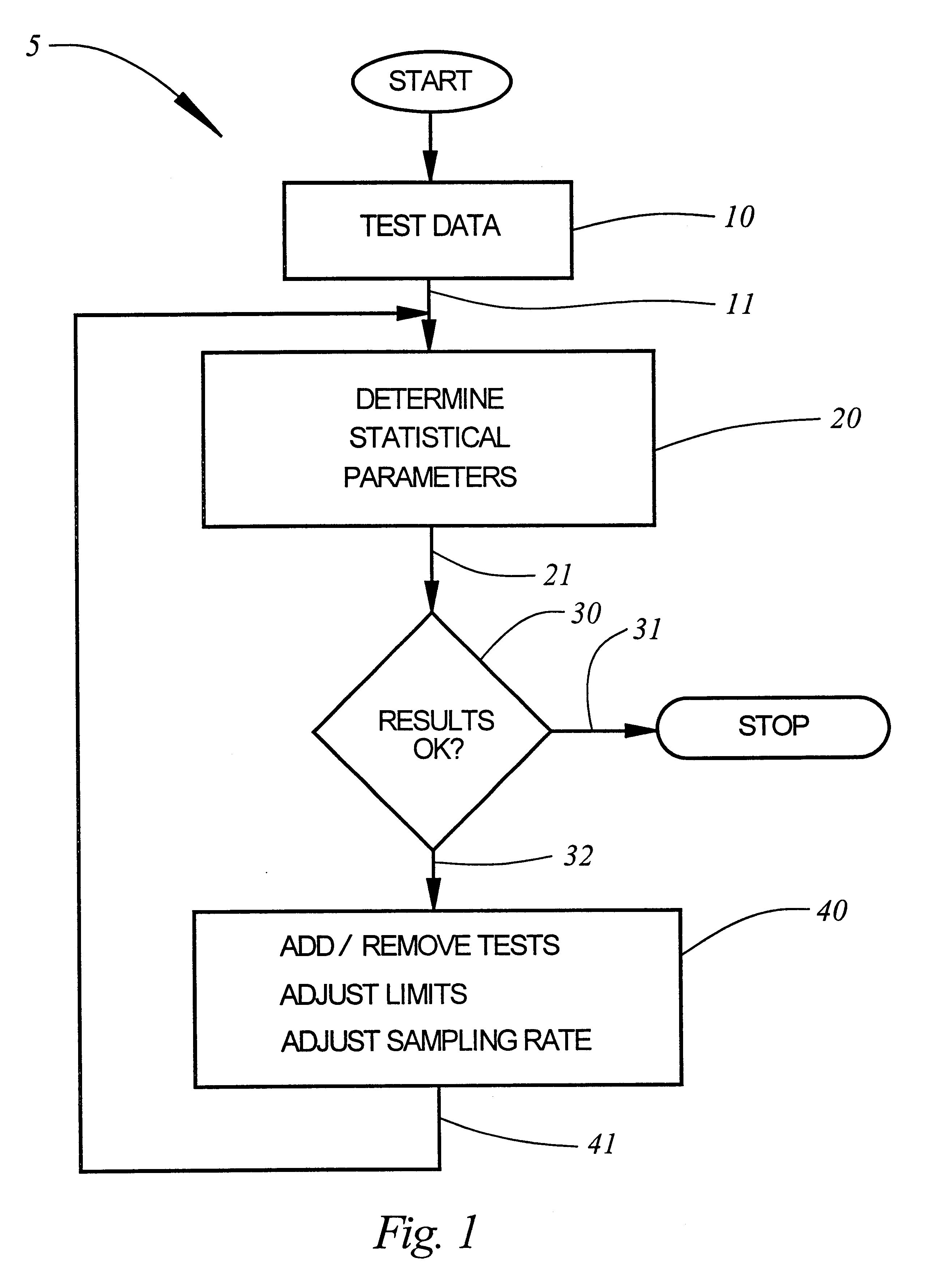Method, apparatus and product for evaluating test data
a technology of test data and apparatus, applied in the field of methods, apparatus and products for quality control, can solve the problems of difficult determining the contribution, not easy to determine the effect of confidence level, and not good candidates for sampling reduction or elimination
- Summary
- Abstract
- Description
- Claims
- Application Information
AI Technical Summary
Problems solved by technology
Method used
Image
Examples
Embodiment Construction
The following example is provided merely to illustrate one embodiment of the present invention, and this example does not limit the scope of the claims of the invention.
Description of the Data
There are a total of 200 samples that represent a series of 10 tests on 20 integrated circuits. Each test result represents a parametric measurement of current, frequency, voltage, or resistance.
For sake of illustration, this Example represents 20 devices sampled from a total of 200 or a 10% sampling, and included a selected number of 10 tests.
Because the STDF file used in this example is binary format and is generally unreadable as text, FIG. 7 is a spreadsheet showing the raw data after conversion form the STDF file in the method of the present invention. The raw data is listed by device number 1-20 across the rows of the spreadsheet, and the results of each of the 10 tests are listed down the columns. The header information is at the top of the spreadsheet and represents the test description...
PUM
| Property | Measurement | Unit |
|---|---|---|
| Ri | aaaaa | aaaaa |
| size | aaaaa | aaaaa |
| RA | aaaaa | aaaaa |
Abstract
Description
Claims
Application Information
 Login to View More
Login to View More - R&D
- Intellectual Property
- Life Sciences
- Materials
- Tech Scout
- Unparalleled Data Quality
- Higher Quality Content
- 60% Fewer Hallucinations
Browse by: Latest US Patents, China's latest patents, Technical Efficacy Thesaurus, Application Domain, Technology Topic, Popular Technical Reports.
© 2025 PatSnap. All rights reserved.Legal|Privacy policy|Modern Slavery Act Transparency Statement|Sitemap|About US| Contact US: help@patsnap.com



